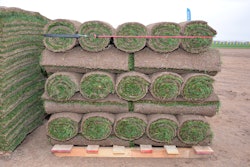 KoiReader uses computer vision technology to automate the transfer of data from images to software.
KoiReader uses computer vision technology to automate the transfer of data from images to software.ELDs have eliminated logbooks from the cabs of trucks and from offices, but a load of paper still accompanies each freight transaction.
All parties have unique documents, from a shipper’s bill of lading (BOL) to merchant receipts that drivers collect from toll agencies, fuel stops, lumpers and other trip expenses.
Motor carriers and drivers use mobile apps to speed the capture of document images, but office personnel still manually enter data from the images to complete invoicing, payroll and other accounting functions.
Managing documents can be especially cumbersome for freight brokers. Being in the middle of freight transactions compounds the images and data processing needed to bill shippers and pay carriers.
Advances in imaging technology, especially with optical character recognition (OCR), can automatically read data from images to reduce manual data entry. However, OCR is encumbered by a lengthy setup process to get software to recognize each document and extract data.
The data that is captured is “unstructured” and lacks context and meaning. Also, OCR also has to be updated frequently as new documents and data come through from images.
A dose of AI
Ashutosh “Ash” Prasad, chief executive of KoiReader, has found an application for artificial intelligence to solve a pain point in the trucking industry from having to manage load documents.
In May he decided to leave an executive position at XPO Logistics to run KoiReader, a company he co-founded. KoiReader uses algorithms and computer vision technology to automatically read data from any document type and create structured data that can be immediately consumed by software applications, such as transportation management software (TMS).
Rather than develop a mobile document scanning app and back-office software, KoiReader launched a suite of “cognitive” application programming interfaces (APIs). The APIs are the mechanisms it uses to take images from any source, read the data on the images and enter it into motor carriers’ office systems.
KoiReader fits the APIs into the normal process a motor carrier uses to manage load documents. A billing clerk reviews the images of a BOL and other receipts side-by-side with the data that is captured from the documents and entered automatically into the fields of a TMS system. KoiReader tags every field in the TMS to determine if the end user had to make edits to the data that was read, or if the data was approved.
If there are errors, such as data the KoiReader program failed to read properly, the system continuously learns and makes the corrections behind the scenes, he explains. That’s where AI comes in. “The brain in the cloud is getting smarter.”
Besides working with fleets, KoiReader’s customers include factoring companies and brokers that want to accelerate the process of processing BOLs they receive from carriers to advance funds.
KoiReader is not just focused on applying computer vision to document scanning. It also is working on applications to convert images and data from videos into structured data. The company recently completed a proof-of-concept for such an application that could be used to manage intermodal containers.
The technology can automate the process of scanning barcodes and entering data from containers and chassis as they move through different areas at a port terminal. The computer vision technology scans video feeds from cameras installed at ports to detect the container and chassis numbers.
Fleets of any size can use KoiReader’s APIs to connect their existing document scanning applications with back office systems to automate data processing. The company does not store the images in the cloud. “It is a very highly secure application,” he says.












